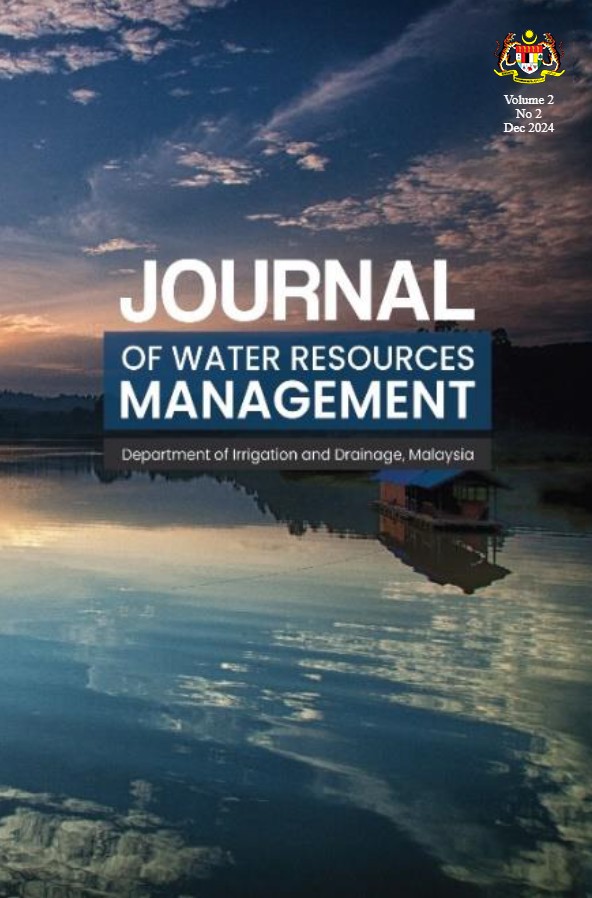Published 13-01-2025
Keywords
- Non-Woven Geotextile, BOD, COD, TSS, Turbidity, Water Quality
How to Cite
Copyright (c) 2024 Journal of Water Resources Management

This work is licensed under a Creative Commons Attribution-NonCommercial-ShareAlike 4.0 International License.
Abstract
Aquatic life will be greatly impacted by clean and high-quality of river water. In Kuala Lumpur the Penchala River is a tributary that flows into the main river which is the Klang River. The problem affecting the upstream area of the Penchala River was the high level of total suspended solids, resulting in greater turbidity in the Taman Persekutuan Bukit Kiara Kuala Lumpur (TPBKKL) Pond, simultaneously affected the chemical properties. The cause is the erosion of river banks following severe rains. When there are significant rains, the river's flow intensifies, causing erosion of the riverbank. Additionally, the TPBKKL Pond's turbidity stems from surface runoff from neighboring forests, where surface runoff enters the river unfiltered. Chemical parameters such as Biochemical Oxygen Demand (BOD) and Chemical Oxygen Demand (COD) are two of the primary measures used in water quality indicator. This study employs non-woven geotextile (NWG) as a filter media in order to reduce the concentration of BOD and COD. Other parameters such as total suspended solid (TSS), turbidity (NTU), dissolved oxygen (DO), pH and ammoniacal nitrogen (NH3-N) were also taken into account to determine the quality of Penchala River. Performance of NWG was assessed based on water quality. NWG properties used are 100% polypropylene materials, with properties design of 190µm (0.19mm) AOS, 2.2mm thickness and permittivity 2S-1. Results showed that the NWG has proven to improve COD by 17% and BOD by 8.68% of average improvement. Therefore, also improved the river classification from Class II to Class I. Other parameters that showed improvement was TSS, with average percentage improvement of 69.7% and Turbidity improvement by 68.5%. Meanwhile data such as pH and NH3-N remained unchanged throughout the study period. Overall, the WQI for Penchala River during prior time of study was in range 83.78 – 86.70 (Class II).

